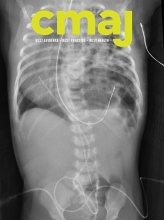A surgeon activates a laser to shrink the tumour in a woman’s trachea. There’s a sudden flash and flames erupt inside the patient, choking her with smoke and burning the branching tree of airways from her larynx to her lungs. After three weeks in intensive care, the woman sues for malpractice. The laser hit the inflatable cuff around a tube delivering anesthetic gases and 100% oxygen. Expert witnesses attest that the fire could have been prevented if the anesthesiologist had followed best practices and used the lowest possible oxygen concentration, usually between 30% and 40%.
Patient safety groups consider surgical fires “never events,” incidents that can be avoided entirely with organizational checks and balances. Yet, the Canadian Medical Protective Association (CMPA) has handled dozens of lawsuits and regulatory complaints involving surgical burns in recent years. Most cases were settled out of court; more may go undocumented.
According to a review of 54 cases of perioperative burns between 2012 and 2016, almost a third involved surgical fires, while the rest involved burns from surgical equipment and chemicals used in surgery. Many patients were left scarred, disfigured and psychologically traumatized. Fifteen percent were severely harmed, with airway damage or full-thickness burns destroying the sensory nerves and all layers of the skin.
For fires to occur, heat, fuel and oxygen must be present. Oxygen was a factor in half of the surgical fire cases reviewed, usually when the concentration of oxygen being delivered for ventilation wasn’t reduced sufficiently during electro- or laser surgery on the head, neck or upper chest. Surgeons who focus on these areas, including otolaryngologists and plastic surgeons, were among those most likely to be involved in burn cases.
Most of the burns that weren’t caused by fire involved heat from equipment. These cases included surgeons using the wrong device or settings, as well as issues with the maintenance, malfunction or positioning of devices. Cases involving fuel were usually caused by the unsafe use of alcohol-based antiseptics, including allowing it to pool under patients, using the wrong concentration, or failing to let it dry before placing drapes. The review also found “noteworthy issues” with communication, diagnosis, management and documentation of burns.

Dozens of Canadians suffered avoidable, often horrific surgical burns in recent years, according to the Canadian Medical Protective Association.
Image courtesy of shapecharge/iStock
To reduce the risk of fires and burns, CMPA recommends that surgical teams “identify, separate and manage the elements of the fire triangle” before procedures. This involves ensuring that “ignition sources should not come into contact with fuels, and oxygen should be reduced to the minimum required concentration.” The association also recommends that surgical teams ensure that antiseptic has time to dry and doesn’t pool, follow device instructions, and run simulations to practice responding to fires.
Footnotes
Posted on cmajnews.com on January 9, 2018.








